Contribution of IPESE to the ESCAPE 35 conference
14 Researchers for the IPESE research group have been presenting their work to the 35th European Symposium on Computer -Aided Process Engineering held in Ghent, Belgium from July, 6th to 9th, 2025.
The contributions can be downloaded from the full proceedings or the book of abstracts of the conference.
The contributions of IPESE cover a large range of applications of computer aided process and system engineering methods applied in different domains of the energy transition.
Industrial process decarbonisation
Integration of renewable energy and reversible solid oxide cells to decarbonize secondary aluminium production and urban systems
Aluminium sector relies on natural gas for recycling scrap into feedstock, contributing ~2% to the global industrial CO2 emissions. Hydric resources are used as cooling media for aluminium direct chill casting, and waste heat is typically rejected to nearby water bodies, instead of using it in district heating networks. Process integration between aluminium plants, urban and regional energy systems promotes energy security, lower environmental impact and energy-efficient use of valuable resources. Renewable energy integration, like electrification and biomass gasification, helps diversify and defossilize heavy industry energy supply, traditionally based on fossil natural gas.
Authors: Daniel Florez Orrego, Dareen Dardor, Meire Ribeiro Domingos, Reginald Germanier, François Marechal
Available at: https://doi.org/10.69997/sct.188682
https://ipese-web.epfl.ch/ipese-blog/ipese_members/Meire/index.html
https://ipese-web.epfl.ch/ipese-blog/ipese_members/Fran%C3%A7ois/index.html
Takeaways:
- Power-to-gas-to-power, carbon capture and use, and storage systems offer further advantages by mitigating the effects of seasonal availability and prices of electricity and fuels. By implementing an industrial battery capable of handling renewable energy intermittency, reversible solid oxide cells can partially supply heat to fired furnaces, as well as electricity to electrical furnaces, rolling processes and heat pumping systems of the district heating network.
- More efforts are needed to defossilize aluminium sector on which other sectors rely, such as cargo, food packaging, and automotive industry. Improved integration strategies can reduce carbon footprint, whereas maintaining attractive energy efficiencies and reasonable incremental investment.
- Up to three times less fossil CO2 emissions can be attained if electrification, CO2 upgrading and rSOC plus storage systems, together with biomass gasification, are adopted.
- Combined heat and power can be partly supplied to the industrial plant and urban systems by using an industrial battery of renewable electricity leveraging rSOC and storage technology.
- Carbon taxes favor the deployment of power-to-gas and storage systems, and promote better CO2 and renewable energy management approaches, phasing out fossil fuels dependency
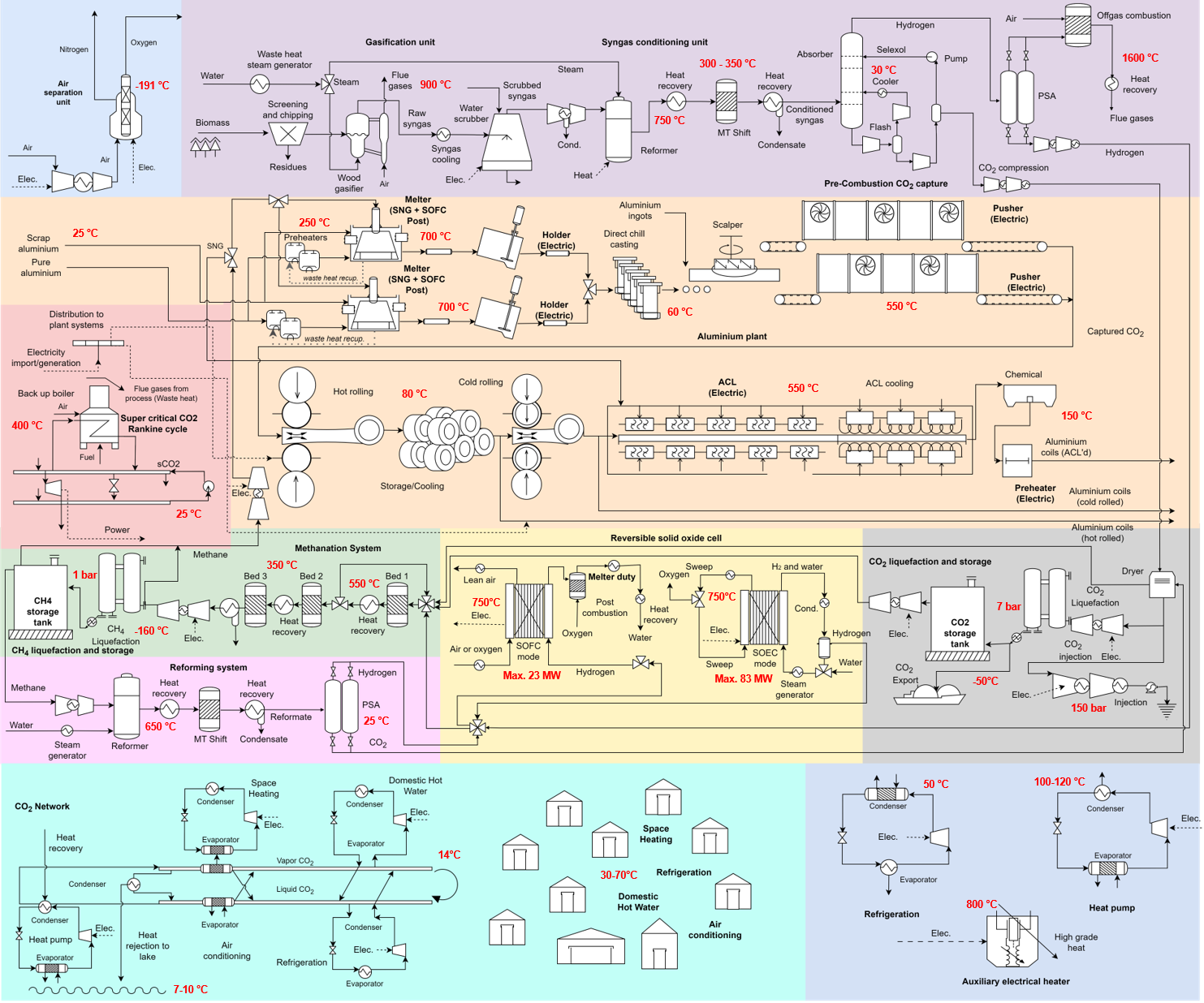
Task XXIV Process Integration for Industry Decarbonization - Subtask 1 - Enabling a shared database of ex-ante models of industrial processes, decarbonization technologies and energy systems featuring sustainability metrics
The goal of this task is to create a model-database sharing framework to leverage the role of process integration for decarbonizing the industrial sectors and assess its impact on the energy transition. This collaborative task is proposed to enable the generation, validation, documentation, and sharing of a database of ex-ante models of industrial processes and decarbonization technologies. The aim is to enable a systemic assessment of the role of process integration and to demonstrate its impact for a net-zero future economy. More info: https://iea-industry.org/tasks/process-integration-for-industry-decarbonization/
Challenges:
- Limited technical information and innovation, lack of time or skilled personnel, pay-walled literature.
- Installation of costly equipment or avoidable increment of energy consumption.
- Share and compare documented and validated models (not just data).
- Ensure objective and reproducible reports based on sustainable performance metrics.
Benefits:
- Centralized library of validated models.
- Easier maintenance and upgrade.
- Constant improvement by sharing knowledge and innovations.
- Easier browsing and comparison between technological solutions.
- Sustainability metrics and clearer roadmaps.
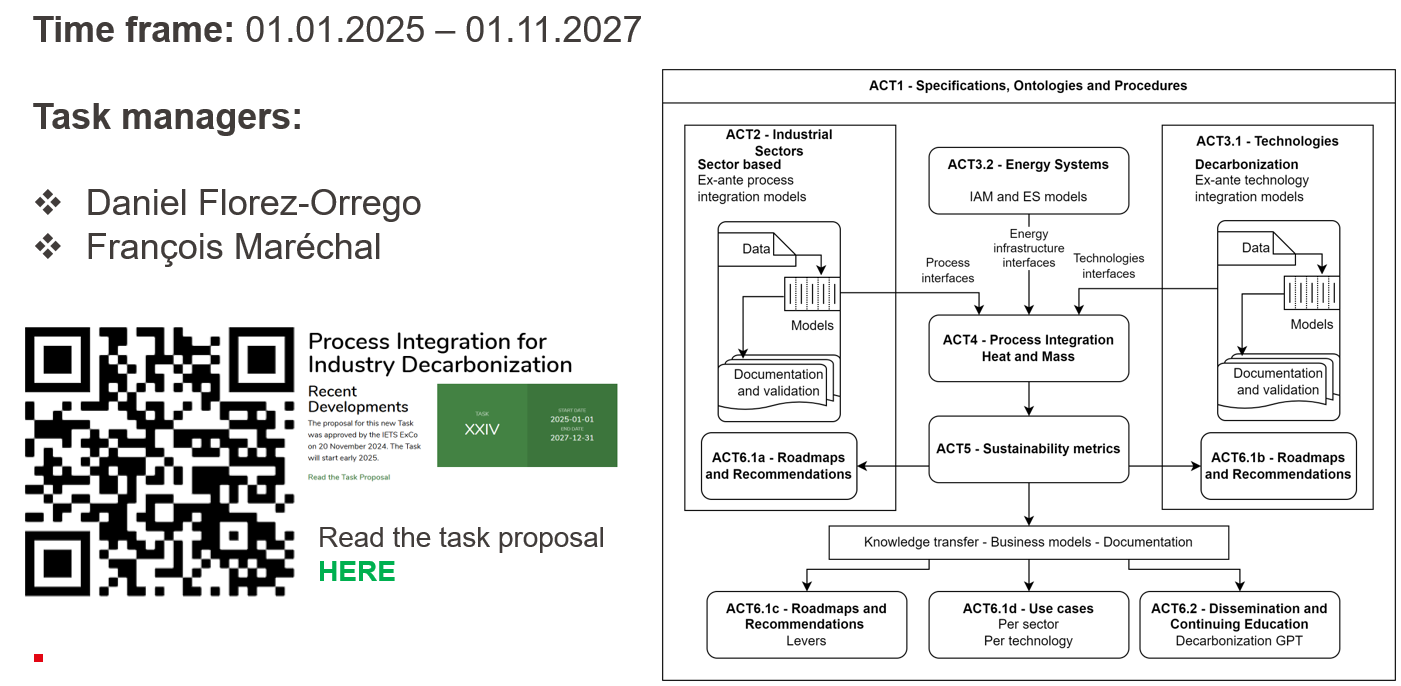
On the Economic Uncertainty and Crisis Resiliency of Decarbonization Solutions for the Aluminium Industry
Our work presented at ESCAPE35 (https://doi.org/10.69997/sct.116664) explores how economic uncertainty—particularly volatile energy prices during crisis events—impacts the viability of decarbonization solutions in the aluminium industry. By combining Monte Carlo Analysis with MILP optimization, we evaluate the financial resilience of four low-carbon aluminium remelting solutions against a natural gas baseline. Results from 10,000 stochastic simulations show that strategies heavily reliant on electricity are highly sensitive to price shocks. In contrast, combining oxyfuel combustion with carbon capture and sequestration remains more robust under both moderate and crisis scenarios. This hybrid PSE-based framework offers valuable insights for industry and policymakers aiming to make informed, risk-aware decarbonization decisions.
https://ipese-web.epfl.ch/ipese-blog/ipese_members/Dareen/index.html
Role of process integration and green technologies utilization for the decarbonization of the watchmaking sector.
Available at: https://doi.org/10.69997/sct.107432
- Energy audit helps in estimating the importance of variation of energy consumption depending upon the characteristic day and season.
- Improved integration strategies have potential to reduce energy consumption by 8%, whereas maintaining reasonable incremental capex.
- Integrating PV technology in net help in reducing energy consumption by 13% and it can range between 4%- 21.4% depending on the month.
- The storage technology charging and discharging depends upon the season and the availability of heat (waste heat or ST).
- Storage technology is economically not viable in introducing in the current system as the changes in TOTEX is positive.
- PV with heat recovery technology is economically viable in the current system.
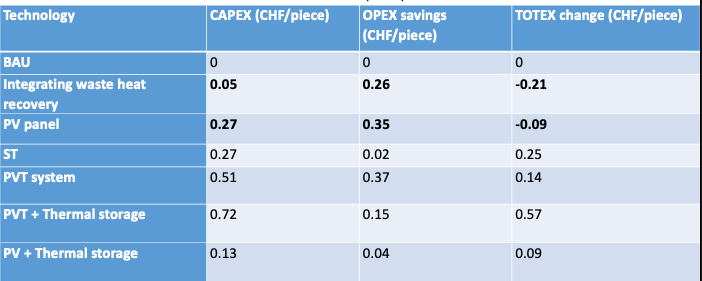
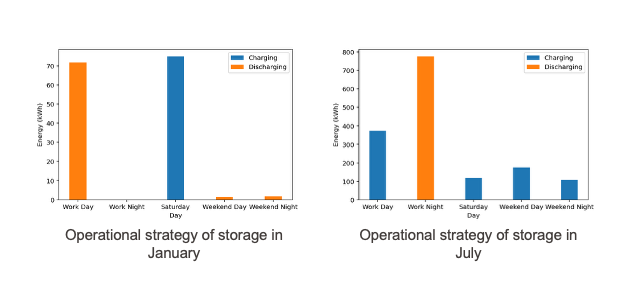
https://ipese-web.epfl.ch/ipese-blog/ipese_members/Pullah/index.html
Waste treatment & valorization
Researchers from the group of IPESE and CIRAIG/HES-SO have just presented their decision-support methodology to evaluate waste treatment technologies options for #sewagesludge
The team presents a systemic approach to analyse conventional treatment technologies, such as incineration and anaerobic digestion (AD), versus hydrothermal gasification (HTG) with syngas upgrading to make CH₄.
• several KPIs are used to compare the different conversion routes, based on the following functional unit (FU): treating 1 ton of sewage sludge
A full life-cycle assessment is done to evaluate the environmental impacts, exergy efficiency, CAPEX/OPEX, and how much fossil methane can be displaced.
• Important numbers:
- HTG standalone: ≈ 10 % exergy efficiency
- HTG + co-electrolysis (co-SOEC): up to 62 % exergy efficiency, and –790 kg CO₂-eq / FU
- Mineralising CO₂ from gasification: –1 100 kg CO₂-eq / FU …but if the CH₄ doesn’t effectively replace fossil gas, but rather is added to the mix, the benefits flip to +770 kg CO₂-eq / FU
- AD pathways: –328 to +70 kg CO₂-eq / FU and remain the most competitive in terms of costs. However, the digestate must be treated to avoid a high human health impact score! • Trade-offs beyond carbon footprint and the other endpoints categories : CO₂-mineralisation and co-SOEC demand a lot of energy → higher water scarcity, ecosystem stress, and fossil / nuclear energy use.
Conclusion: climate gains depend on real fossil-gas substitution and access to low-carbon electricity.
https://ipese-web.epfl.ch/ipese-blog/ipese_members/Soline/index.html
Effects of molecular structures on decarbonisation pathways for bioplastics alternatives
Bioplastics derived from non-edible biomass offer a potential solution to the triple crisis of climate change, ecosystem pollution and habitat loss caused by conventional plastics. However, current technologies retrofitting biobased molecules to petrochemicals result in high process complexity and low biomass utilisation efficiency, therefore hindering economic competitiveness and absolute sustainability.
At ESCAPE35, we presented our collaborative work between IPESE and LPDC, where we performed a comprehensive modelling study comparing the economics and life cycle impacts of four fossil-free bioplastic production pathways to PET alternatives.
Our key finding is that only substitutes that have structures that are closer to the native plant can become cost-competitive with fossil-based PET under lower carbon tax scenario and using reasonable biomass demands. This result has important implications for policy makers and investors as it encourages them to focus on developing the markets for substitutes that are not direct replacements of today’s petrochemicals but provide clear environmental benefits. Combined with efficient recycling of existing plastic waste, readily biodegradable bioplastics show great promise to sequestrate renewable biogenic carbon into value-added products.
https://ipese-web.epfl.ch/ipese-blog/ipese_members/marie/index.html
The role of storage in municipal solid waste treatment systems: Multi-objective resources integration
To improve the waste management solutions with regards to circular economy goals for material recovery and transitioning energy supply systems, novel treatment technologies are often energy intensive. The work presented at ESCAPE (poster session) showed the methods applied to evaluate the role of storage and Demand Side Response (DSR) to cope with the fluctuations of renewable power generation, in the context of waste treatment systems. This work is part of a collaboration between IPESE and the R&D department of Kanadevia Inova AG (Zürich), started in 2020.
We presented the decision-support framework proposing sustainability (technical, economic, environmental and social) performance indicators integrated bottom-up from a common inventory, provided by a simulation environment in OpenModelica following specific modeling conventions. The process models are linearized through an interface (in Python) and used to formulate a Mixed-Integer Linear Program, enabling multi-objective optimization. The on-going study tackles the integration of (mixed) municipal solid waste sorting technologies, leveraging the storage of mixed waste and sorted fractions, as well as thermal storage, to satisfy a seasonal district heating network demand and to adapt to an intermittent renewable power production (typically, solar and wind). Preliminary results show the importance of taking into account the operational interruptions of the sorting technologies.
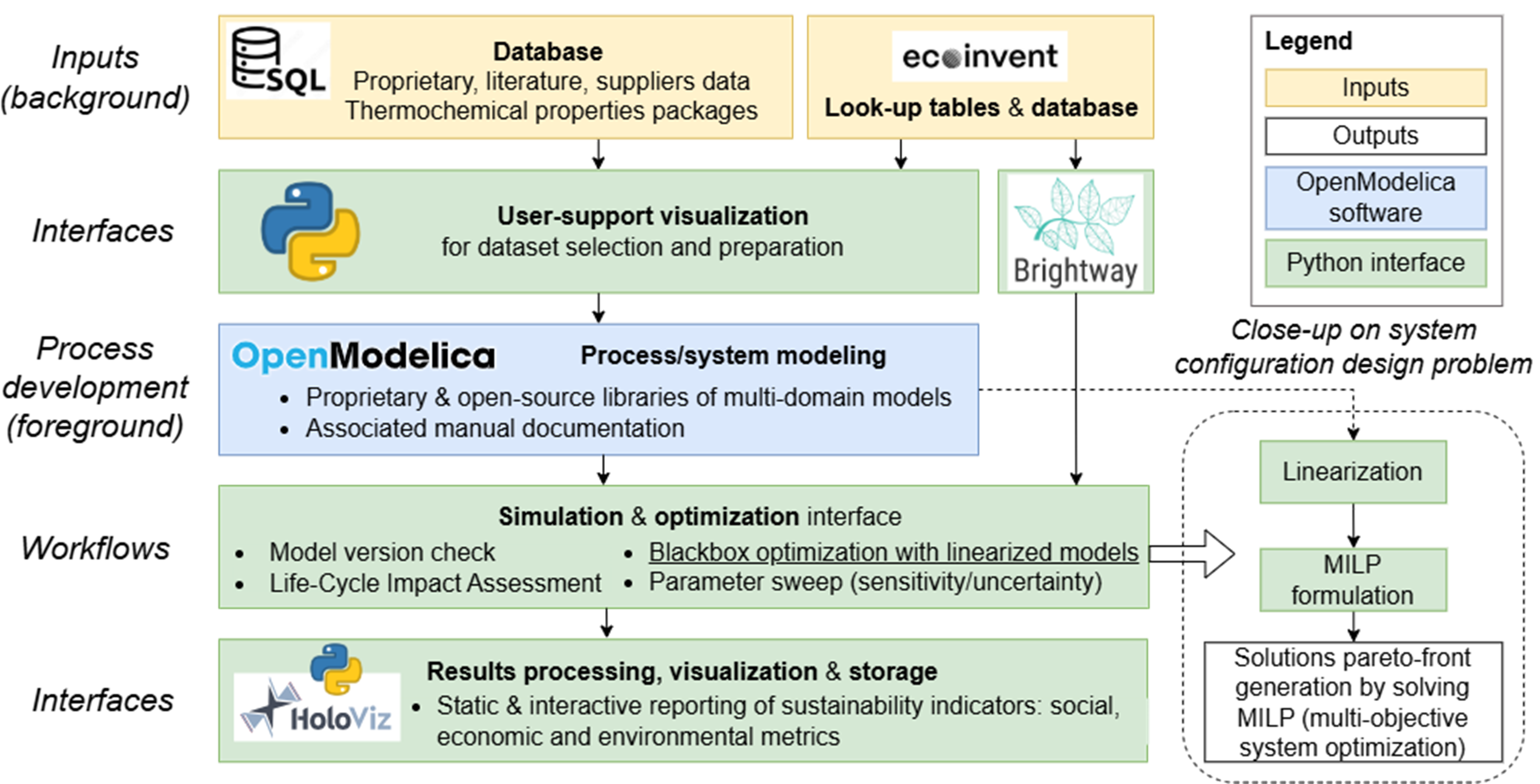
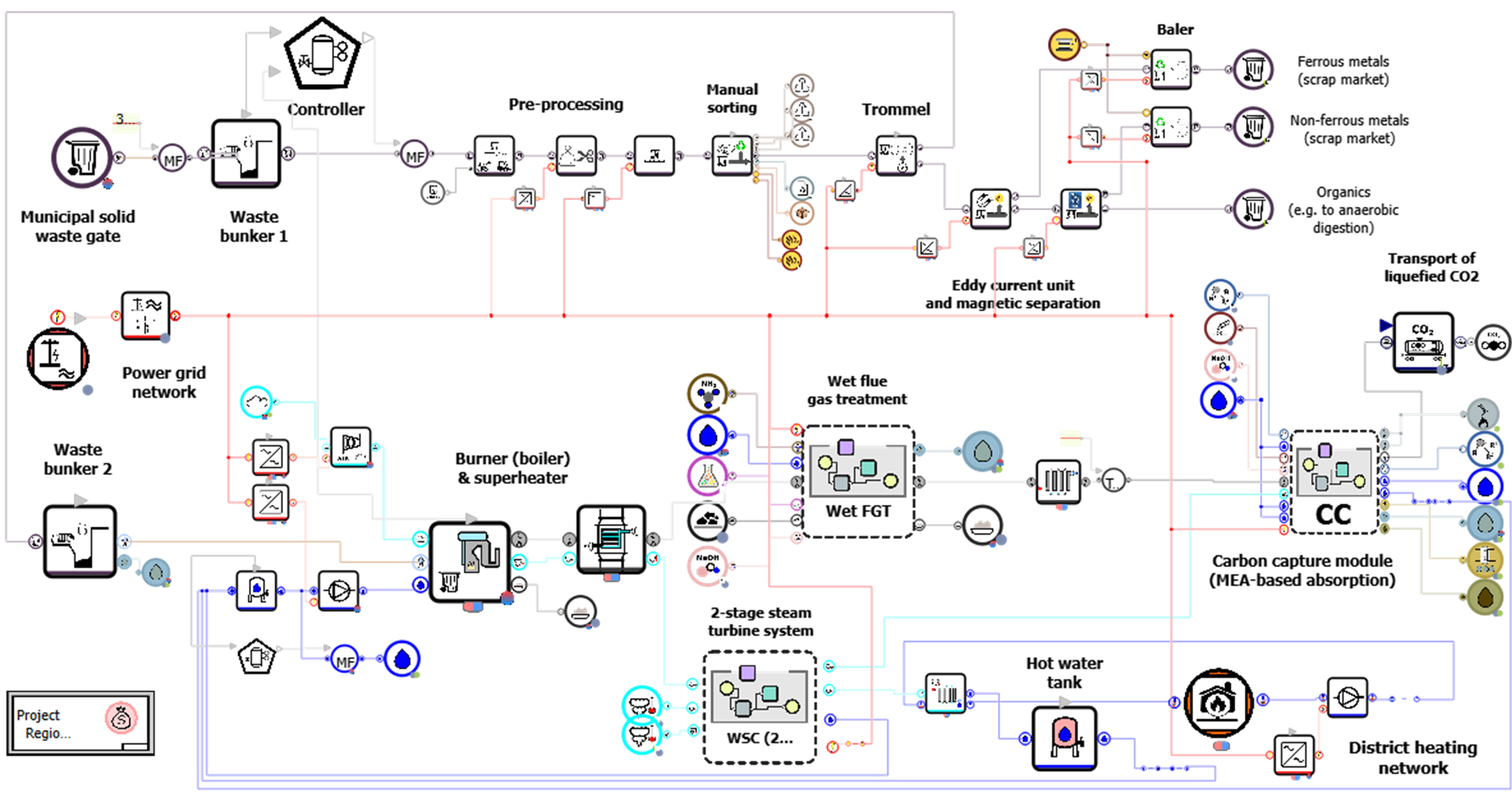
https://ipese-web.epfl.ch/ipese-blog/ipese_members/Julie/index.html
Process integration and waste valorization in sustainable biodiesel production towards an energy transition of the transporation sector
Available at: https://doi.org/10.69997/sct.147707
The transportation sector remains heavily dependent on fossil fuels, making it one of the largest contributors to global greenhouse gas emissions. Biodiesel, derived from renewable feedstocks, offers a promising alternative that reduces emissions, enhances energy security, and supports rural economies. However, widespread adoption is hindered by challenges such as low energy efficiency, suboptimal process integration, and underutilization of byproducts like glycerol. This study presents an integrated framework for biodiesel production and byproduct valorization, aiming to improve process efficiency and reduce emissions. It supports the long-term decarbonization of the biofuel value chain by addressing both technological and systemic bottlenecks.
Takeaways:
- Feedstock comparison (1st generation biomass) - Transesterification yields from vegetable oils—palm, soybean, and rapeseed—were found to be comparable. This suggests that biodiesel production from these feedstocks results in similar Scope 1 and 2 emissions, offering flexibility in raw material selection without compromising direct environmental impact.
- Waste Cooking Oil (2nd Generation): Although waste cooking oil achieves similar biodiesel yields, it requires additional energy for pre-treatment (esterification). While it benefits from low raw material costs, scalability remains a concern due to supply chain limitations and uneven availability.
- Process Optimization – A two-step transesterification process significantly reduces residence time without sacrificing yield. Recycling the separated stream from the second to the first reactor further reduces methanol and catalyst consumption. Yield optimization reached 99% in just 10 minutes of reaction time, improving suitability for industrial-scale operations.
- Decarbonization potential: Electrification of heat supply, along with valorization of byproducts and waste heat, enhances sustainability. Crude glycerol processed through anaerobic digestion, followed by carbon capture from the biogas stream, can enable energy-positive and carbon-negative biodiesel production.
- Towards life cycle assessment: Future work will incorporate Scope 3 emissions—considering the impacts of methanol production and feedstock cultivation—to evaluate the full life cycle performance of biodiesel under different decarbonization strategies.
https://ipese-web.epfl.ch/ipese-blog/ipese_members/Vibhu/index.html
Olefins Production through Sustainable Pathways: Techno-economic and Environmental Assessment
Available at: https://doi.org/10.69997/sct.138183
At ESCAPE35 in Ghent, we presented our latest work on co-gasification of plastic waste and biomass to produce olefins, with the aim of moving toward a circular and low-carbon economy and offering an alternative to traditional steam naphtha cracking.
Our study integrates various (thermo)chemical processes, including co-gasification, methanol synthesis, and the methanol-to-olefins (MTO) process, with carbon capture, utilization and storage (CCUS) technologies and renewable energy, to assess the techno-economic and environmental feasibility of alternative pathways for sustainable olefin production.
The results have shown that CO₂ upgrading significantly increases the carbon efficiency, from 55 percent up to 97 percent compared to conventional steam naphtha cracking, fully maximising the resource efficiency. Direct CO₂ emissions can be fully avoided, reducing net fossil emissions by up to 70 percent even when fossil-based plastic waste is used as feedstock. Seasonal CO₂ storage enhances economic performance by buffering electricity costs and enabling efficient use of excess renewable power. The profitability of the configurations remain challenged due to high requirement of electricity but with the decarbonization of the electricity generation, relying more on renewable resources, benefits of the proposed configurations are expected to become increasingly significant.
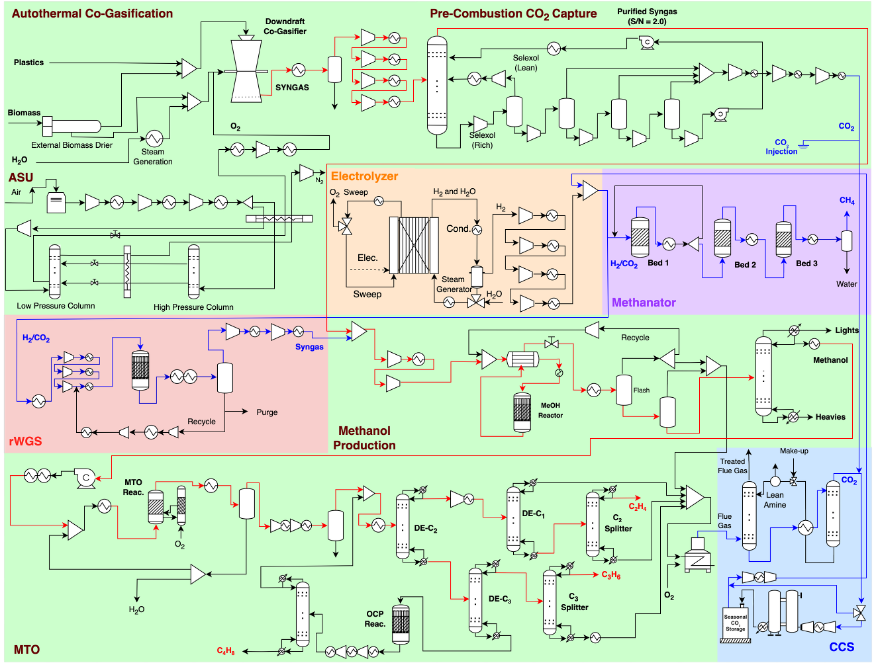
Urban systems
Potential of Reversible Solid Oxide Cells and Long-term Energy Storage in Residential Areas This study aims to evaluate the potential of reversible Solid Oxide Cells and Long-term storage in energy community as a mean to gain flexibility of operation, avoid grid congestion and better exploit local energy resources. Different economical contexts were studied in REHO to activate the rSOC storage system and the benefits of the system were assessed on several energetic outcome such as electricity, heat or even net hydrogen export. The implementation of rSOC systems shows a capability to exploit the full PV potential of buildings and even could increase self-Sufficiency up to 85% relying on long-term storage. The normalized installed capacity of these systems vary from 0.2 to 1 kW SOFC per 100 m2 with storage volumes as low as 3 m3/100 m2.
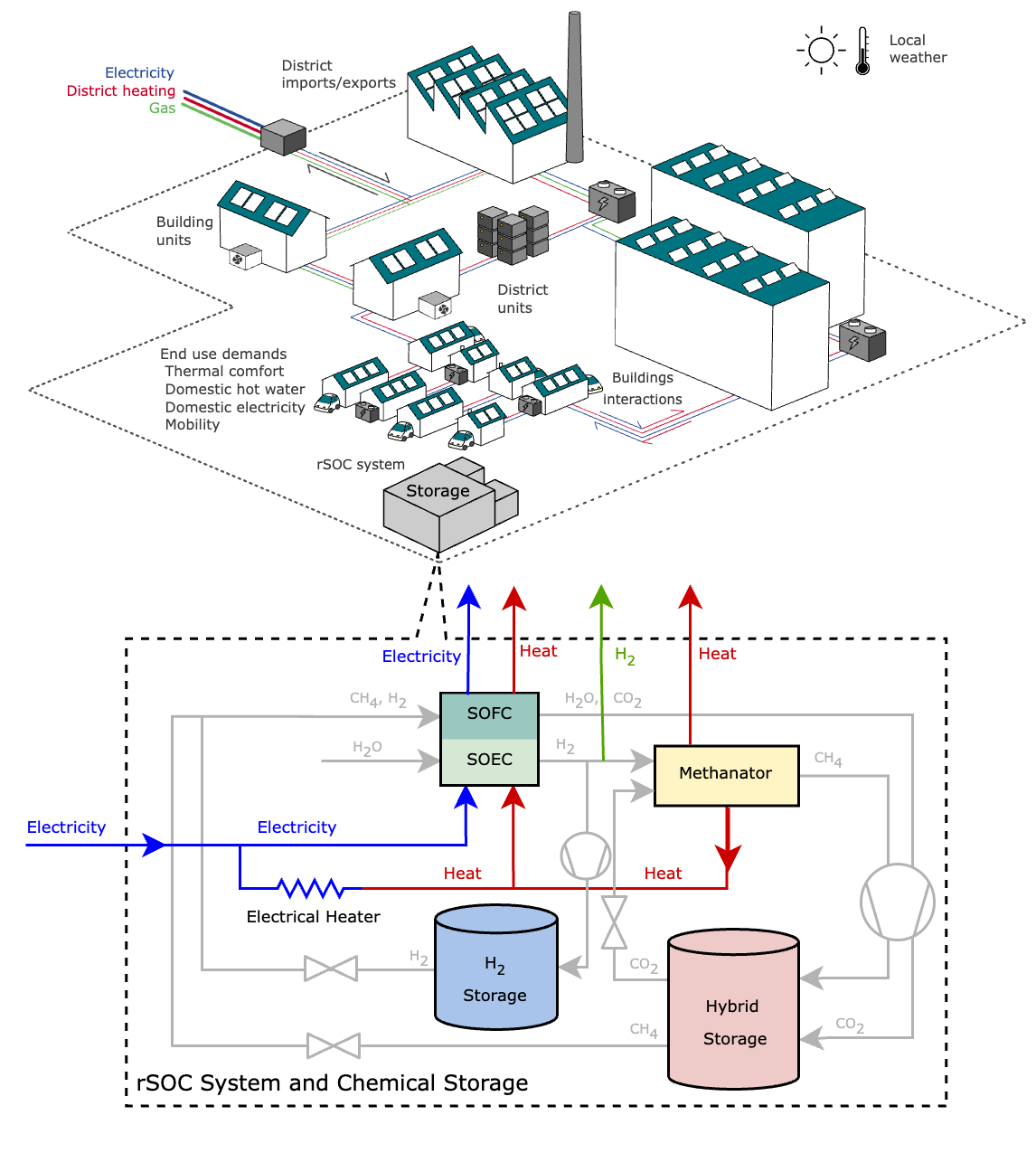
AI & PV systems
Large Language models (LLMs) for reverse engineering of perovskite solar cells
Perovskite solar cells (PSCs) are poised to revolutionize the photovoltaic landscape by offering a compelling alternative to traditional silicon-based technologies, primarily due to their potential for lower production costs and reduced environmental impacts. However, one of the most significant barriers to their commercial viability remains: long-term operational stability. Given the vast and complex experimental data available on perovskite stability, advanced machine learning—particularly large language models (LLMs)—offers a powerful means to accelerate discovery. At ESCAPE35 in Ghent, we introduced a novel methodology that combines LLMs with structured data to predict the stability of various perovskite compositions, considering both material and process variables. To go further, we leveraged multiple LLMs in combination with clustering techniques to generate and analyze new composition “recipes”. This allowed us to detect patterns linked to both high and low stability, offering insights into degradation mechanisms and stability-enhancing strategies. This work highlights the potential of LLMs in tackling frontier challenges in solar energy research, especially in unravelling the intricate factors behind PSC degradation and guiding the rational design of more stable devices.

https://ipese-web.epfl.ch/ipese-blog/ipese_members/Naveen/index.html